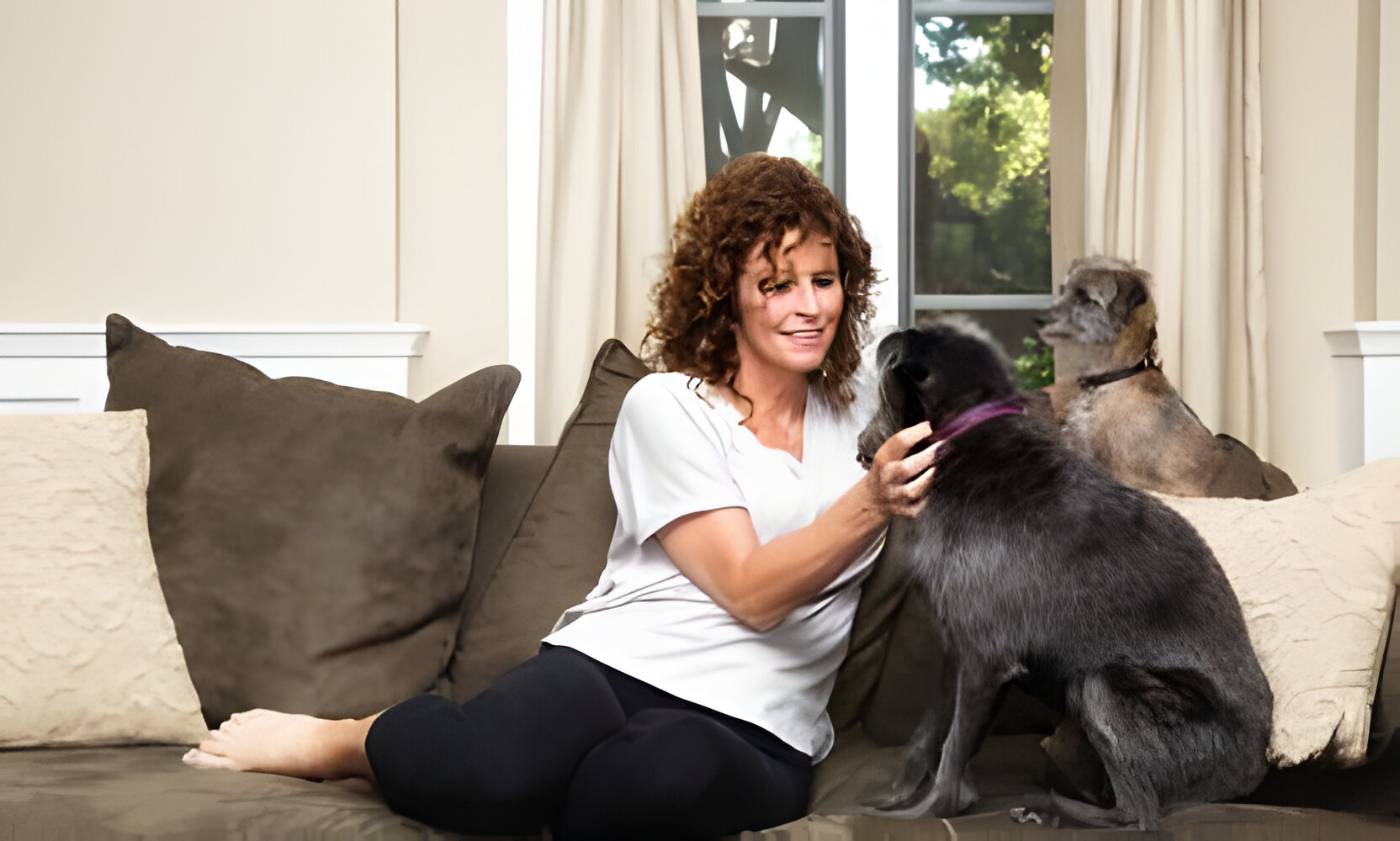best benadryl to euthanize a dog


Facing the tough decision to euthanize your dog is a heart-wrenching experience for any pet owner. Euthanasia with Benadryl and Diphenhydramine, when overseen by vets, offers a way to ensure peace during your pet’s final moments.
This guide aims to inform you about this method, providing steps and considerations for home euthanasia. Read on for compassionate advice.
Key Takeaways
- Euthanizing a dog at home with Benadryl should only happen after talking to a vet.
- The right dose of Benadryl is important and depends on the dog’s weight.
- Making the space calm and comfy helps your dog feel safe in their last moments.
- Always stay with your dog, offering love until they pass away.
- After your dog dies, decide between cremation or burial based on personal choice.
Understanding When Euthanasia is Necessary

Sometimes, pets get really sick or hurt and can’t feel better. When nothing can make them happy or stop their pain, saying goodbye might be the kindest choice.
Terminal Illnesses
Terminal illnesses in dogs mean they are very sick and cannot get better. This includes cancer, heart disease, and kidney failure. Signs include not eating, pain that won’t go away, and trouble breathing.
It’s a tough time for pet owners. You might have to think about putting your dog to sleep to stop their suffering. Talk to a veterinarian first. They know about animal health and can help you decide what’s best for your dog.
Deciding on euthanasia is hard but sometimes it’s the kindest choice. The vet will look at how bad your dog’s illness is and if there is any way to make them comfortable without more pain.
They use their medical knowledge to give advice about end-of-life care or humane euthanasia at home or in an animal hospital. This decision comes from love for your pet and wanting the best for them in their final days.
Intractable Pain
Dogs with intractable pain suffer greatly. This kind of pain does not get better with medicine. It comes from serious health issues like cancer or severe injury. Think of your dog trying to walk, eat, or sleep but can’t without hurting a lot.
That’s what this pain is like.
Deciding to euthanize a pet facing this constant hurt is tough yet sometimes necessary for their peace. Vets often use terms like “quality of life” to help pet owners understand when it’s time.
They might suggest euthanasia if the dog has more bad days than good ones—meaning most days are filled with more pain than joy.
In my experience, watching a beloved pet struggle every day was heart-wrenching. After consulting with our vet—who talked about options and what to expect—we knew we didn’t want our furry friend to hurt anymore.
So, we chose humane euthanasia at home as the kindest path forward.
Dangerous Behavioral Issues
Some dogs show aggressive behaviors. These can hurt people or other animals. If a dog bites, growls often, or attacks without reason, this is serious. A vet might say these actions mean the dog is not safe around others.
Medicines like Benadryl won’t fix these problems.
Vets know about animal behavior and health. They can tell if a dog’s bad actions are due to pain or sickness. Sometimes, no treatment helps. Then, the vet and the owner may decide together that euthanizing the dog is the kindest choice.
This decision comes after trying everything to make the dog better.
Severely Diminished Quality of Life
Pets like dogs become part of the family. So, seeing them in pain hurts us too. A dog with a very low quality of life might not enjoy things they used to love, such as playing or going for walks.
This could be due to terminal illnesses, unending pain, or severe behavioral issues. Deciding on pet euthanasia is tough but sometimes necessary to stop their suffering.
Vets are key in making this decision. They can tell if medicines like Benadryl should be used to gently end a pet’s journey at home. The goal is always a peaceful farewell where the dog feels loved and calm until the end.
Choosing this path requires consulting your veterinarian closely to ensure it’s done humanely and safely for your beloved pet.
Consulting Your Vet About Euthanasia

Talk to your vet about putting a pet to sleep. They can help make sure it’s the right choice and guide you through it. Keep reading for more tips on this tough topic.
Getting Their Medical Opinion
Consult with a veterinarian to gauge your dog’s health. This step ensures any decision about euthanizing at home is informed and humane. Vets consider various factors, including terminal illnesses, intractable pain, severe behavioral issues, and diminished quality of life.
They review all options for palliative care or humane euthanasia methods if needed. Your vet may suggest medications like Benadryl as part of a sedation plan but will guide you on the correct dosage per pound of body weight to avoid harm.
Their expertise helps you understand when it’s time and how to proceed safely, respecting your pet’s well-being until their final moments.
Reviewing All Options
Talking to your vet brings all choices into light. They will discuss palliative care, pain management, and hospice. These are ways to make your dog comfortable without ending its life.
Your vet knows about medicines that help with pain or make a dog calm. For instance, they might suggest using medications like Benadryl for ease but not for euthanasia.
Another choice is getting a second opinion. This confirms the need for such serious steps. Many memberships include this service at no extra cost. This step ensures you understand every possible way to help your dog stay comfortable during its last days.
Making the Decision Together
Talking to your vet is a must if you think it’s time to say goodbye to your furry friend. They will give their medical view and look at all ways to help. This ensures the choice made is informed and kind.
Vets know a lot about pets’ health and can tell if using benadryl or other medicine is right, depending on your dog’s case.
Making this choice with your vet helps you understand it’s the kindest decision for your pet facing severe illness or pain. It’s hard but knowing you’re not alone in deciding can bring some comfort.
Your vet will guide you through each step, making sure it’s done gently for your dog’s final journey.
Preparing for Home Euthanasia
Getting your home ready is key. Pick a quiet spot, make sure your furry friend is cozy, and have the meds close by.
Choosing a Calm Setting
Pick a quiet place in your house where your dog feels safe and loved. This spot should be away from loud noises and busy areas to keep stress low for your pet. Use cushy beds or blankets to make them comfortable.
I found my living room, with its gentle lighting and familiar smells, was the perfect choice when I had to say goodbye to my own dog. It’s key that this space also allows you to sit close by, offering the physical closeness that provides comfort during their final moments.
Preparing Your Dog Comfortably
Find a quiet place where your dog feels safe and loved. This spot should be away from distractions, like loud noises or unfamiliar people, ensuring their last moments are peaceful.
Make this space comfortable with their favorite blanket or toy, something that smells familiar. Your presence is crucial; sitting close provides comfort they need. Gather all medications beforehand to ensure everything proceeds smoothly without leaving your dog’s side.
Gathering Required Medications
You need to get the right amount of Benadryl. Vets use Benadryl as a sedative in euthanasia. Measure your dog’s weight first. This helps know how much medicine you need. A common rule is 1 mg of Benadryl per pound your dog weighs.
Also, avoid Tylenol PM for this process. It has acetaminophen, which is harmful to dogs. Make sure only to use medicines safe for pets, like liquid Benadryl or tablets meant for allergies without dangerous ingredients.
Administering Benadryl for Euthanasia
Using Benadryl to put a dog to sleep is a serious step. It’s about the right dose and how you give it to your pet.
Appropriate Dosage for Benadryl
To safely euthanize a dog at home using Benadryl, a vet must set the dose. They often suggest an amount three times more than what you’d give for allergies or calming. This means if your pet weighs 50 pounds, vets usually recommend 150 milligrams of Benadryl.
This high dose aims to peacefully put your dog to sleep without pain.
For accurate dosing, switch from liquid forms to tablets because they’re easier to measure and less likely to cause errors. Each tablet typically contains 25 milligrams of diphenhydramine—the active part that makes your pet sleepy.
So, for a 50-pound dog, you would need six tablets. Always have water ready to help your dog swallow the pills and make sure they’re comfortable during this tough time.
Step-by-Step Administration Process
Administering Benadryl orally while ensuring your dog stays hydrated is crucial. Keeping a close eye on your pet throughout the process is equally important. Here’s how you can do this effectively:
- Confirm the right dose of Benadryl, usually 1 mg per pound of your dog’s weight.
- Ensure you have the right form of Benadryl; tablets are commonly used.
- Create a calm environment to help your dog feel comfortable and safe.
- Crush the Benadryl tablets into a fine powder for easier intake.
- Mix the powdered Benadryl with a small amount of your dog’s favorite food or a treat to encourage them to eat it.
- Offer water alongside to aid swallowing and hydration.
- Stay with your dog, offering comfort and love during this tough time.
- Observe your dog closely for any signs of distress or discomfort as the medication takes effect.
Using these steps ensures that you administer Benadryl safely and with care, prioritizing your dog’s comfort throughout the process.
Being Present for Your Dog’s Final Moments
Stay close, hold them gently. Your love eases their journey.
Offering Comfort and Love
Hold your dog close and speak softly to them. Your voice brings comfort. Keep petting and cuddling your dog throughout the process. This shows love and eases their stress.
Your presence matters most during this time. It helps keep your dog calm as they fall asleep for the last time. This act of being there, offering gentle touches, ensures they feel safe and loved in their final moments.
Monitoring Your Dog Closely
Keep a close eye on your dog during this tough time. Make sure they are calm and not in pain. Watch for signs that show how they’re feeling, like if they seem more peaceful or if something seems wrong.
This careful watch helps make their last moments as gentle as possible.
Staying by their side lets you offer love and comfort right until the end. It is important for them to hear your voice and feel your touch, providing reassurance that they are not alone.
Paying attention also means you can quickly respond if their discomfort increases, ensuring the process is humane and filled with care every step of the way.
Aftercare Planning for Your Dog
After your dog passes, think about whether you want cremation or a burial in the garden. It helps to talk with someone who knows about losing a pet.
Deciding on Cremation or Burial
You must choose how to handle your dog’s remains after euthanasia. Cremation or burial are the main options. Each choice depends on personal beliefs, available space, and budget. For cremation, you can pick between individual or communal services.
Individual cremation gives you back your pet’s ashes for keeping or spreading in a meaningful place. Communal cremation means your pet is cremated with others and you won’t get the ashes back.
If you prefer burial, check local laws first. Some places allow pets to be buried in the yard if health codes are followed. Alternatively, pet cemeteries offer dedicated spaces for dogs with marked graves or monuments.
This way, there’s a specific spot where you can visit and honor your beloved dog.
Seeking Pet Loss Counseling
Losing a dog can hit hard. Help from pet loss counselors or support groups makes it easier. These experts know how to guide you through your grief. They offer ways to commemorate and honor your beloved pet.
Friends and family help too, but sometimes talking with someone who understands the depth of losing a furry friend offers more comfort.
Places like vet clinics often have contacts for these counseling services. They also might know about local groups that meet to talk about their pets that have passed away. Sharing stories and memories in these meetings helps heal hearts.
It’s a step towards finding peace after such a tough loss.
Conclusion
Choosing to euthanize a dog at home requires careful thought. Consulting with a vet ensures the process is safe and peaceful. This guide shows steps for using Benadryl and Diphenhydramine, but always under veterinary advice.
Comforting pets in their final moments is critical. Aftercare decisions like cremation or burial come next. This approach aims to make a hard choice somewhat easier, focusing on compassion and care throughout each stage.
FAQs
1. Can Benadryl euthanize a dog safely at home?
Yes, but it’s risky and not recommended. Veterinarians advise against using over-the-counter drugs like Benadryl to euthanize dogs because the outcome can be unpredictable and potentially painful for the pet.
2. How much Benadryl is toxic to dogs?
The toxic dose depends on various factors including the dog’s weight, age, and health condition. Generally, doses higher than 1 mg per pound of body weight may cause issues—yet for euthanasia, this threshold doesn’t apply as the intent is lethal.
3. Should I contact my vet before giving my dog Benadryl for euthanasia?
Absolutely! Contacting your vet ensures you get professional advice on whether it’s the best course of action for your pet’s comfort and quality of life or if there are better alternatives.
4. What are other medications combined with Benadryl for euthanasia?
Veterinarians might combine Benadryl with other medications to ensure a more humane end but doing so without veterinary guidance could lead to prolonged suffering. Always seek a vet’s input before combining medications.
5. Is it legal to euthanize your pet at home without veterinary help?
Laws vary by location; however, choosing to humanely euthanize a pet at home without veterinary supervision is generally discouraged due to potential suffering caused by incorrect dosages or methods.
6. Are there any side effects when using antihistamines like Diphenhydramine in dogs?
Diphenhydramine in dogs?
Yes, side effects include drowsiness, dry mouth, urinary retention, high blood pressure—and in severe cases—seizures in dogs especially when overdosed or used improperly.






